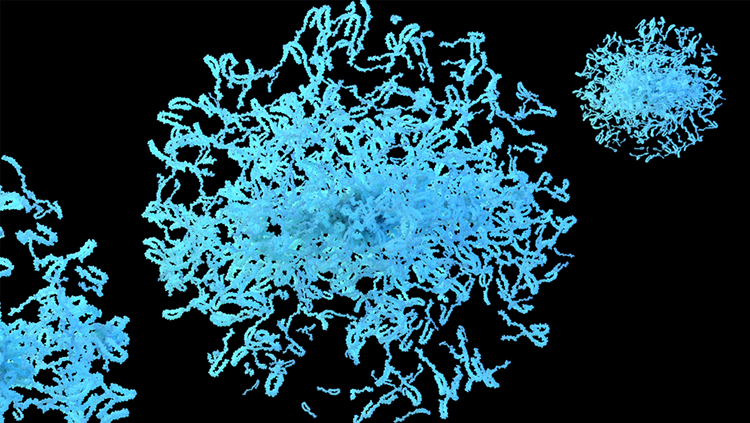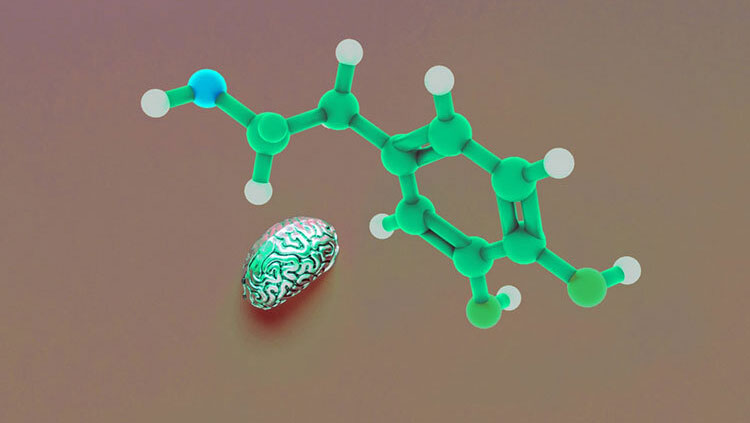Calcium’s Vital Role in Neurotransmission
- Published16 Dec 2024
- Source BrainFacts/SfN
Calcium is crucial for neural signaling, making it vital for all our brain and body’s processes.
Neurotransmitters are stored in vesicles at the end of neurons' axons. When a neuron is activated, calcium rushes inside and causes the vesicles to fuse with the axon membrane, releasing their neurotransmitters into the synapse. So, if calcium is too low, neural signaling will weaken or even fail. But neurons beware, it’s all about balance — too much calcium can be toxic.
This is a video from the 2024 Brain Awareness Video Contest.
Created by Emily Huang.
CONTENT PROVIDED BY
BrainFacts/SfN
Transcript
The nervous system is one of the most fascinating systems of the human body. The constant firing of action potentials allows us to eat, breathe, feel, and think.
But what allows for the constant communication between neurons?
When you think of calcium, what do you think of? Perhaps you think of a large glass of milk, or maybe the stuff you use in chemistry class.
But what if I told you that calcium plays a vital role in all our functions, from the sense of taste to the perception of pain, to the muscle contractions that are important for playing your favorite sport. How does calcium play a role in these functions?
At the end of the axon is a small bulge called the axon terminal. A small patch of membrane called the active zone contains pools of vesicles, which store the basis of neurotransmission.
Vesicular transporters line the vesicles and use the enzyme vesicular ATP-ase to pump hydrogen ions into the vesicle. As those hydrogen ions flow along the concentration gradient and out of the vesicle, they generate energy.
Using the energy generated, vesicular transporters can pump neurotransmitters against their concentration gradient into the vesicle. So, what causes the release of these neurotransmitters into the synapse?
When an action potential reaches the axon terminal, the depolarizing current will trigger the opening of voltage-gated calcium channels. The influx of calcium into the axon terminal activates the v-SNARE protein, synaptotagmin.
Located on the vesicles, two v-SNARE proteins, synaptotagmin and synaptobrevin, play a vital role in regulating neurotransmitter release.
In the presence of calcium, they interact with t-SNARE proteins expressed on the cytoplasmic side of the axon terminal.
The v-SNAREs and t-SNAREs twist together to form a SNARE complex.
As the SNARE complex twists tighter and tighter, the vesicle gets closer and closer to the inside of the cell membrane, eventually resulting in fusion. The contents of the vesicle are dumped out into the synapse, leading to neurotransmission.
The neurotransmitters bind to the postsynaptic receptors, resulting in downstream effects.
Have you ever wondered how your body seamlessly carries out everyday functions like walking, chewing, and breathing?
These functions are carried out by special circuits of neurons called central pattern generators (CPGs). CPGs are capable of carrying out rhythmic, repetitive behaviors without any additional brain or sensory inputs.
The basic movements produced by CPGs require calcium to occur. During any type of muscle contraction, the entrance of calcium into the cell initiates the sliding of actin and myosin filaments.
These two filaments make up a sarcomere. The combined force of thousands of sarcomeres is what allows for muscle contraction.
Let’s think back on how calcium plays a role in proper vesicular fusion and neurotransmitter release. What happens if something goes wrong?
One potentially fatal condition, called botulism, is caused by exposure to the bacteria Clostridium botulinum.
Remember how I said that v-SNAREs and t-SNAREs twist together to form a SNARE complex? Well, the bacteria Clostridium botulinum selectively severs those proteins, preventing neurotransmitter release from happening.
Although concentrations as low as 2 ng/kg of the botulinum toxin may be fatal, the popular skin injections, Botox, are made from the exact same toxin!
Calcium also plays a role in your ability to taste your favorite flavor of cake. The taste modalities of sweet, bitter, and umami activate the G-protein alpha-gustducin, which causes an increase in the activity of the enzyme phospholipase C-beta2.
This activates the second messengers, diacylglycerol (DAG) and inositol triphosphate, or IP3. IP3 causes an increase in the release of calcium into the cytoplasm, resulting in the opening of TRPMP5 receptors.
This results in membrane depolarization and the firing of action potentials, allowing you to experience taste.
Think back to your favorite childhood memory. Maybe it was the time you got your first puppy, or when you lost your first tooth.
Long-term memories are the result of a cellular phenomenon called long-term potentiation, or LTP. The opening of a particular glutamate receptor, called NMDA receptors, results in an increase in calcium entry into the cell.
Calcium ions activate the protein calcium/calmodulin-dependent protein kinase II (CaMKII), which plays a large role in LTP through increased trafficking of AMPA receptors to the cell surface and the activation of cAMP response element-binding protein (CREB).
Despite its diversity in functions and proven importance, too much calcium can be bad. Excitotoxicity due to excessive levels of glutamate and calcium may result in cell death and damage to DNA.
This phenomenon is observed in a host of neurodegenerative diseases, including Alzheimer’s, Parkinson’s, and multiple sclerosis
So, while calcium is vital to all our body’s functions, too much can be damaging as well. Like all things in life, it’s all about balance!
Also In Genes & Molecules
Trending
Popular articles on BrainFacts.org

















